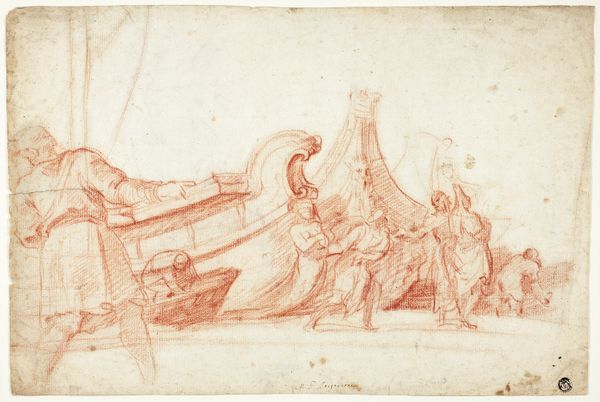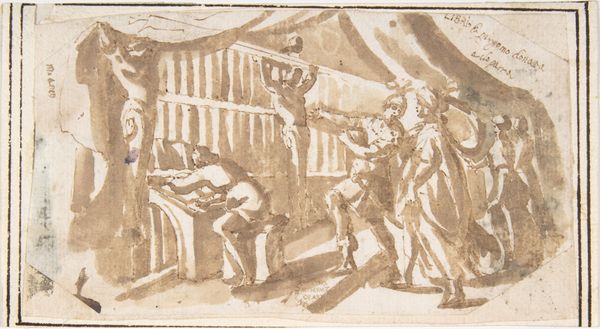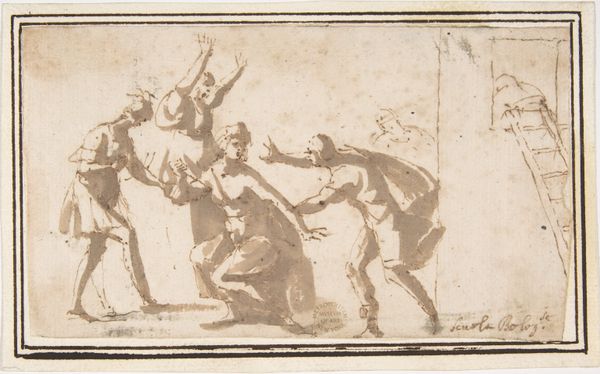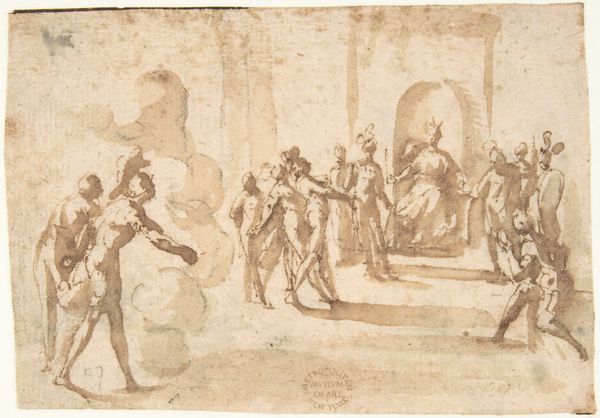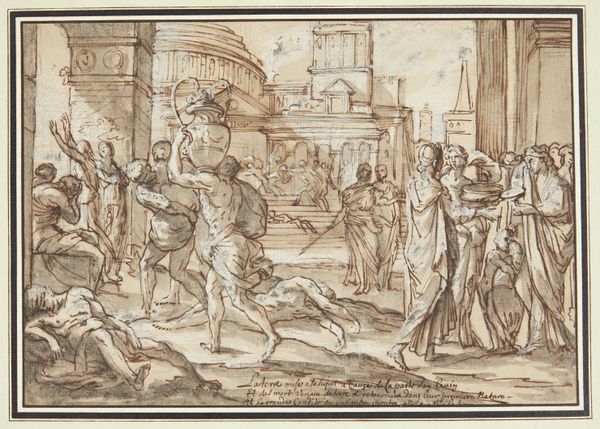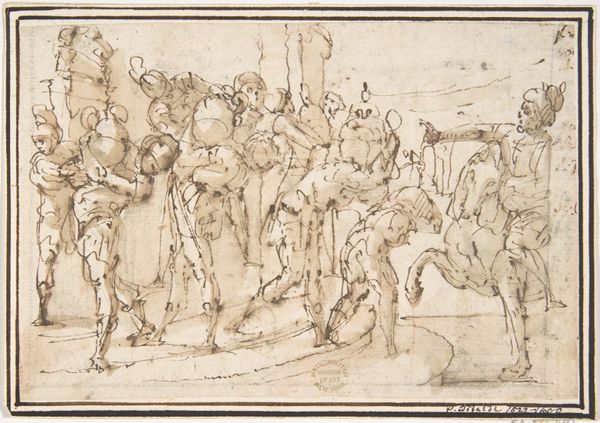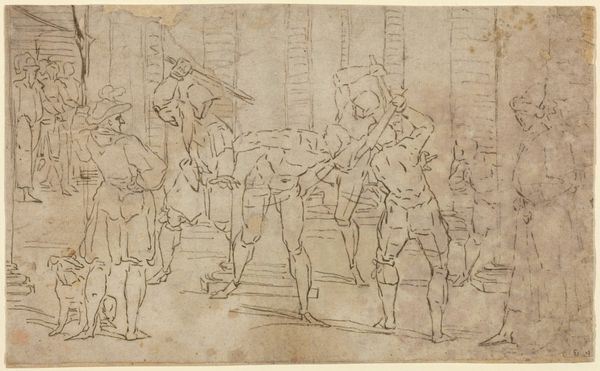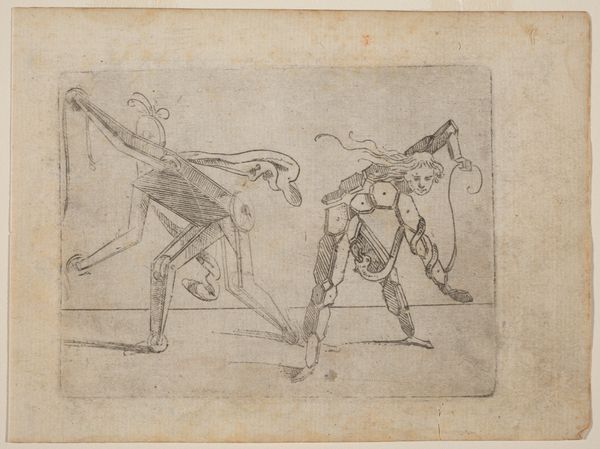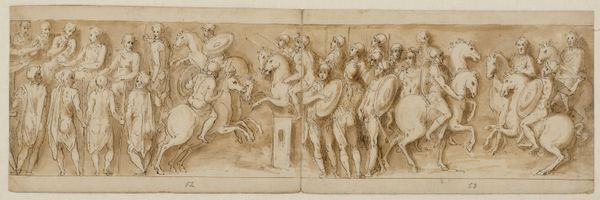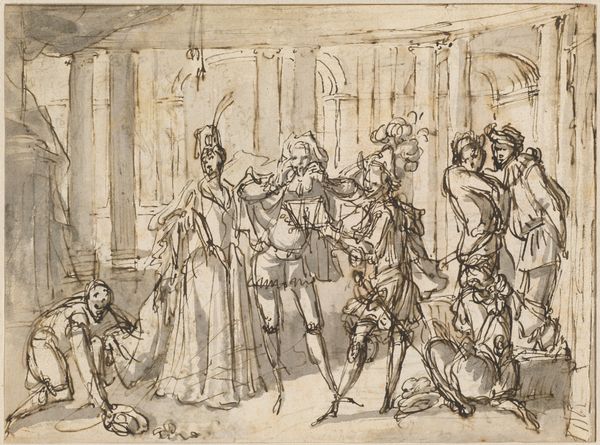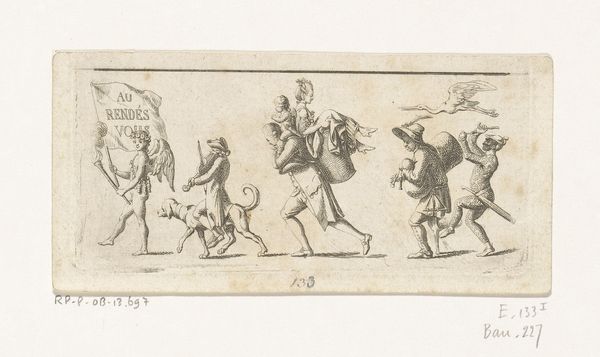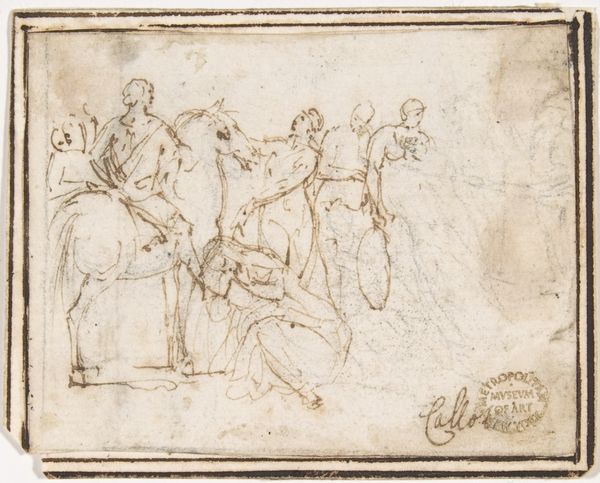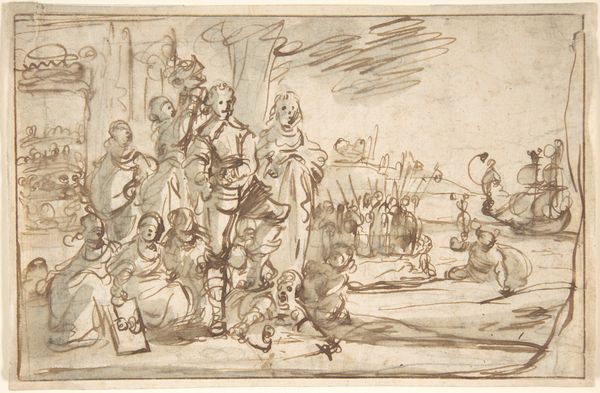
Enthroned Warrior Distributing Crowns 1624 - 1663
0:00
0:00
drawing, paper, ink, pen
#
drawing
#
baroque
#
ink painting
#
figuration
#
paper
#
ink
#
men
#
pen
Dimensions: 3-9/16 x 5-1/16 in. (9.0 x 12.8 cm)
Copyright: Public Domain
Curator: Before us, we have "Enthroned Warrior Distributing Crowns" by Francesco Allegrini, created sometime between 1624 and 1663. It's an ink and pen drawing on paper. What's your initial read of this piece? Editor: It feels very… ceremonial. There’s a definite hierarchy depicted; it strikes me as a narrative of power and its visual construction, all rendered with these delicate washes of ink. The scene seems to project a sense of grand gesture undermined by fragility of the ink. Curator: Absolutely. Allegrini was working in a very particular socio-political context. Rome was flexing its muscles post-Reformation. You see the patronage of powerful families like the Barberini who sought to establish their legitimacy through lavish displays of art and architecture. This piece would have circulated among that elite class, likely as preparatory work for larger projects. Editor: It's interesting how the performative aspect of leadership is brought forward. Look at how that central figure, raised on what appears to be some kind of platform, oversees this almost ritualistic passing out of crowns. And then you have those horses passively waiting. Who gets crowned and who watches the horses, that is a social commentary in itself. Curator: Yes, the symbolism is quite pronounced. While it’s hard to pin down the specific event or narrative being depicted without more contextual information, it echoes themes prevalent in baroque art—divine right, authority, and the spectacle of power. Also, Allegrini’s technique here, with its fluid lines and dramatic shading, fits squarely into the aesthetics favored by the establishment. Editor: Yet there’s a sketchy, almost unfinished quality about it. This highlights not just the final proclamation, but also suggests a process—power being negotiated, contested. It makes me wonder about the recipients of those crowns. What kind of bargains or violence underlies this exchange? Who were the people on the margins absent from the visual narrative, yet undeniably influenced? Curator: Those are crucial questions. It’s important to remember that art like this, even in sketch form, plays an active role in reinforcing and perpetuating certain social narratives. It doesn’t simply reflect power; it helps construct and legitimize it. Editor: Indeed. Examining such pieces invites us to reflect critically on how representation itself participates in historical processes. And to contemplate whether art in public space could function beyond a simple celebration. Curator: A powerful reminder that even historical art can spark critical conversations about the distribution and impact of power structures that are alive today. Editor: Precisely. And hopefully spark debate in our current moment.
Comments
No comments
Be the first to comment and join the conversation on the ultimate creative platform.
